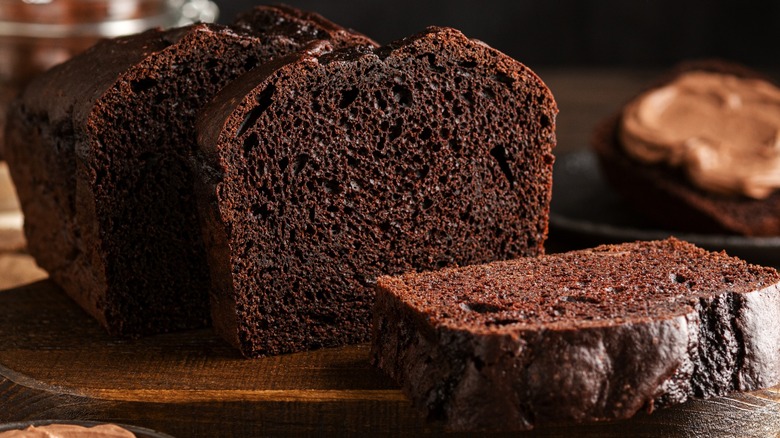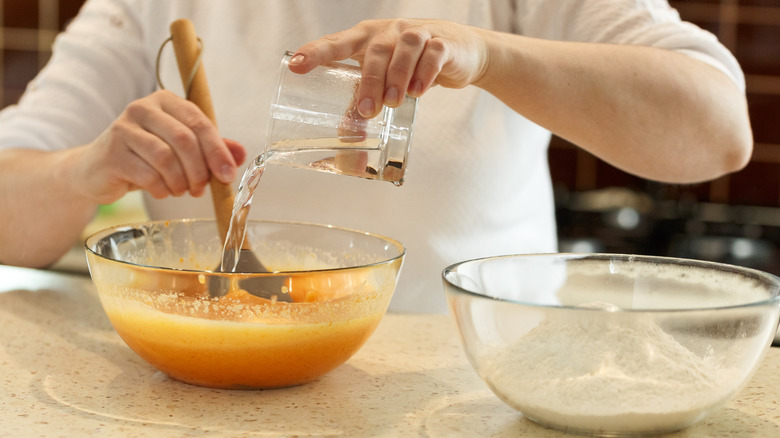How To Quickly Swap Out Milk With Water When Baking A Cake
You're baking a cake, and you've mixed your dry ingredients. Now, it's time to measure the wet contents: eggs, oil, vanilla, and milk. Only, you're all out of milk and, truth be told, you'd have been better off checking the ingredients list against your pantry stock beforehand. But we're not here to judge you — this is just one of the biggest mistakes while baking that we're all prone to commit.
To swap out 1 cup of whole milk use 1 cup of water and 1 ½ teaspoons of butter — that's it. It's not the white, dairy moo juice you're used to, but it works. Perhaps it's because water does just as good a job as milk at hydrating cake — if not better. As for butter? It provides the fat that water lacks so that you end up with a tender cake that's rich in flavor.
You can even skip the butter if you're working with amounts less than a quarter of a cup (60 milliliters). Use a 1:1 ratio of milk to water in such cases — nobody will be able to tell that you messed around with the original cake recipe. However, the rules may change as the amount of milk required increases above 1 cup. Due to a notable lack of proteins and sugars in butter compared to milk, a more suitable substitution for every cup of milk thereafter may be ½ cup of water and ½ cup of evaporated milk — if you haven't run out.
Consider these possible outcomes
There are approximately 8 grams of fat in a cup of milk and 6 grams in 1 ½ teaspoons of butter, so you're guaranteed a moist, fat-enriched cake like the original. That is until you account for the gap between protein and sugar amounts after swapping out milk. The truth is, there's more that transpires beneath the baking surface, including protein's strengthening effects, so consider the possible outcome of a cake with a compromised structure, especially for larger-scale recipes.
Besides adding moisture to a cake, milk undergoes the Maillard reaction. This is a heat-based reaction between certain sugars and proteins — lactose and amino acids, in this case — to produce a brown crust. In other words, if you don't mind a slightly blonde cake after swapping out milk for water, use this substitution method. But be warned that an outstanding feature of the Maillard reaction is also the complex aromas it extracts from a cake, so you must be happy to sacrifice both.
There's a silver lining to this, however, and it's chocolate cake. Chocolate cake is the recipe we know to actually turn out better with water than with milk. Firstly, you won't have to worry about a blonde outcome since the dark color of cocoa will easily take care of that. And there's the fact that (hot) water blooms chocolate's aromas and allows them to shine through; milk hinders that. It's certainly the reason we consider water one of 16 ingredients that can elevate chocolate cake.

